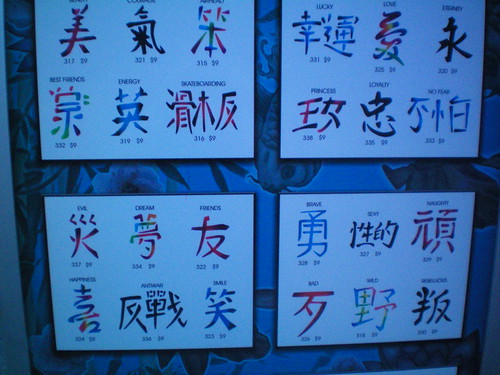Same word - character written differently. Why?
he2xu4
August 10, 2011, 02:58 PM posted in I Have a QuestionFor example, 睡, 直, 着 are not written the way they look on the screen as you see them now. 睡, the vertical side strokes are not touching the horizontal strokes when you write it. There is no left vertical line when you write 直.
You get the picture, there are plenty of other examples. Is this just the way it is? Is there any rhyme or reason for this?
xiaophil
August 11, 2011, 02:52 AMI guess bweedin is on the right track.
On a side note, for some reason I had a Chinese teacher that always wrote 国 the traditional way in mainland China. I asked her why she did it that way. (I think I saw others write it this way too.) She told me she didn't know why, and she gave me the impression she didn't realize she did write it 'incorrectly'. I thought it odd, not extremely odd, but odd. Sorry for the tangent.
he2xu4
August 11, 2011, 03:07 PMI don't mean written by humans, but on webpages or electronic documents or physical media.
Look at:
http://en.wiktionary.org/wiki/File:%E7%9D%A1-bw.png
If I were to go on the font representation, the vertical strokes on the right side touch the horizontal strokes. But written, in the stroke diagram, they don't.
bweedin
yep. what Orangina said!
orangina
August 11, 2011, 04:20 PM
Here are a bunch of lower case "g"s. They fall into 3 basic types: small capital, the ones with two circles with an gap between them on the right, and the ones that have one circle and either a closed lower loop, or an open curved line. I included a few fonts that are meant to mimic handwritting. I beleive that is what we find in stroke order diagrams... a font meant to mimic handwritting.
ggggggggggggggggggg
I understand your frustration, but there will be much bigger windmills to tilt in your chinese language learning quest than font discrepancies. I recomend making peace with it.
he2xu4
August 11, 2011, 09:56 PMI agree that this is something you have to deal with but I am asking more why and also how to deal with it.
Yes, a and g can be written many ways, but I have 1/26 guesses as to which character it is.
In Chinese, it is 1/many thousands.
For example, I cannot for the life of me figure out the characters on the board in this picture:
http://www.nytimes.com/imagepages/2011/08/11/nyregion/JP-CHINANYC2.html
he2xu4
August 11, 2011, 09:58 PMhttp://www.nytimes.com/imagepages/2011/08/11/nyregion/JP-CHINANYC2.html

orangina
Neither of those characters are in any of my dictionaries. Maybe a native speaker has some insight?
I don't think this is the same problem though. All of the pieces of these characters are very clear and quite recognizable. Perhaps the calligrapher had something else to say.
babyeggplant
Reminds me a bit of the "characters" I saw at a theme park a couple of years ago. They don't even look like calligraphy. It's more like somebody with no Chinese background at all tried to draw something Chinese-looking. 
bweedin
August 10, 2011, 04:21 PMDoes anybody write an "a" like that? The printed and the written forms are different, right? you get where I'm going with this? :)